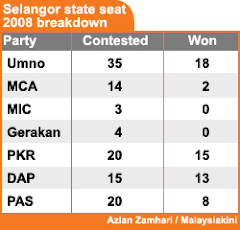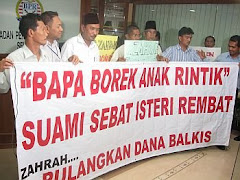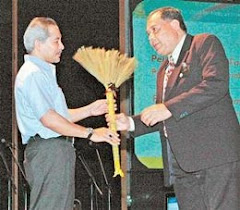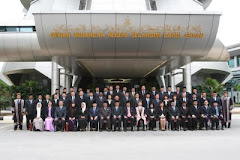May 6, 2008 - VALLEY VIEW BY ELAN PERUMAL
EXPECTATIONS are high among the people that a large number of the local councillors for the various city and municipal councils in Selangor will be non-politicians.
Some have even speculated that only eight of the 24 councillors in each of the 12 local authorities in the state will be political party leaders or members.
The people are hopeful that this will be done under a 8-8-8 formula, with equal representations of politicians, NGO officials and professionals.
According to local government and town planning expert Derek Fernandez, the 8-8-8 formula will benefit the people because such a combination would promote better decision-making.
During a recent Ipoh City Watch forum on the restructuring of local councils, Fernandez told reporters that Selangor Government was the first to come with the formula and was looking for suitable candidates to fill up the 24 posts at the Petaling Jaya City Council (MBPJ).
Fernandez’s comment may lead people of Selangor to expect that two-thirds of the councillors will be non-politicians.
However, political observers, including those aligned to the former Barisan Nasional state government, felt that the formula was not practical.
While the onus was on the Pakatan Rakyat state government to deliver the election promise that the NGO members, community leaders and professionals will sit in the local councils, they said it was not possible for two-thirds of the councillors to be non-politicians.
“It sounds sensible to have 16 politicians and eight others who represent the various groups of people,’’ an observer said.
“The fact that the Pakatan Rakyat state government is made up of three coalition parties, I believe that it is difficult for it to even allow one-third of the councillors to come from the NGOs, community leaders and professionals,” he said.
The main difficulty for Mentri Besar Tan Sri Khalid Ibrahim and State Local Government Committee chairman Ronnie Liu is how to work out a formula that will satisfy the three component parties of PKR, DAP and PAS.
Sufficient number of seats must be allocated to each of the three parties so that it will reflect well on the ruling government’s power-sharing policy at the local council level.
Ironically, Liu’s headache can only grow worse with his list of councillors shrinking from 24 to 23 at each local authority.
This is because an automatic slot is reserved for an Orang Besar Daerah, the palace district representative, in each council.
So, it seems likely that only eight seats will be allocated for non-political representatives.
Only 15 seats are then left for the three parties to share among themselves.
The seats are likely to be allocated based on the performance of the parties in the general election in the various council areas.
There is also a possibility for the parties to compromise on the number of their representatives based on the racial breakdown of the population in a particular municipality.
If the racial quota is used, the number of representatives from the various parties will differ from one council to another and so will be the representation of the various races.
Based on the racial formula, Petaling Jaya, Subang Jaya and Klang are expected to have more non-Malay councillors while Shah Alam and other Malay-majority areas will certainly have more Malay representation.
Subscribe to:
Post Comments (Atom)










No comments:
Post a Comment